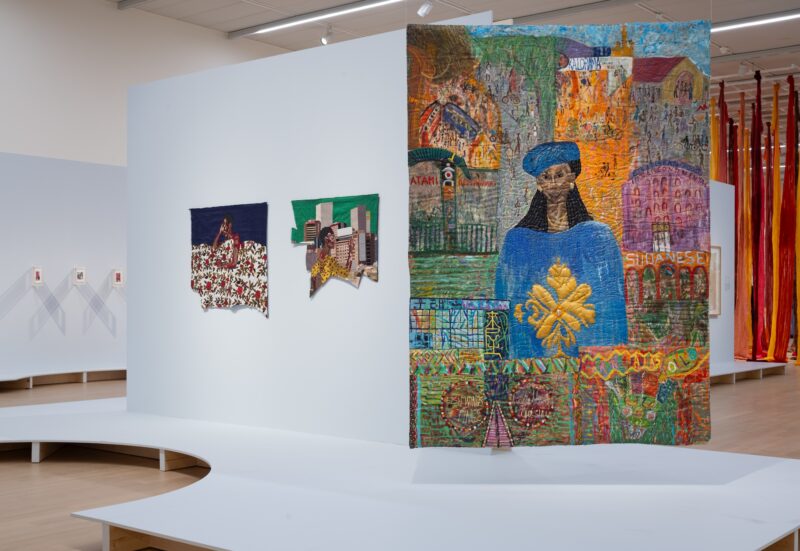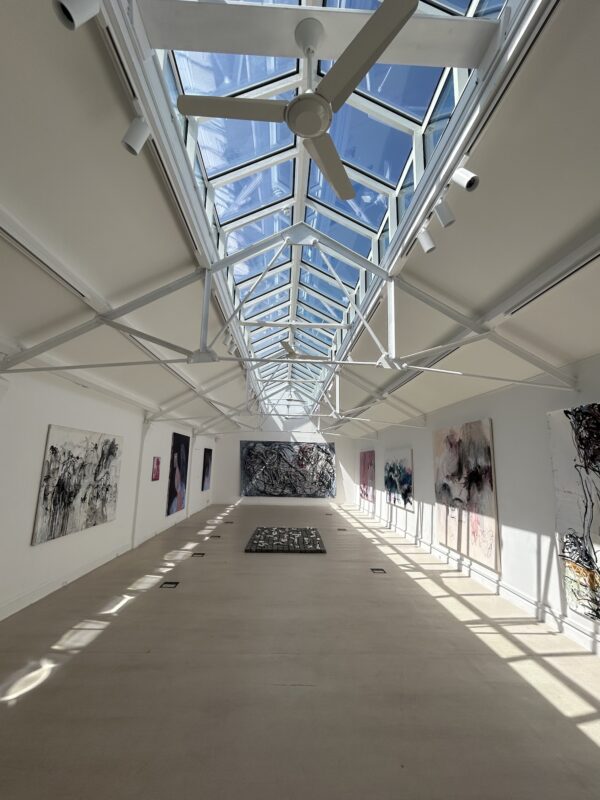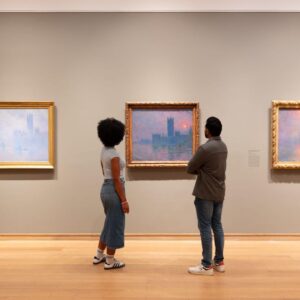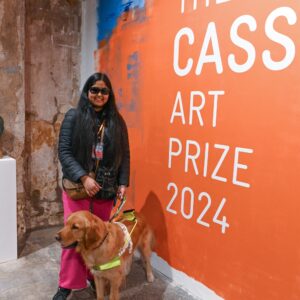
Tracey Emin stands in front of a piece of her reclaimed painted timber and neon artwork sleeping with you at the hayward gallery
Tracey Emin talks feminism, identity and fashion on Dior Talks, the podcast Creative Director Maria Grazia Chiuri launched in honor of International Women’s Day. Dior Talks sat down with boundary pushing artist Tracey Emin for its fourth episode focused on the feminist art genre. Emin, a prominent figure in the Young British Artists movement, previously collaborated with Dior in 2017, when she created a specially commissioned neon sign for the brand’s pop-up store in Paris.
Podcast host Katy Hessel, a curator and writer, engages Emin in a conversation on the connection between art and fashion, the construction of identity and the challenges facing women in art. Emin also touches on a selection of her past works including Do Not Abandon Me, made in collaboration with Louise Bourgeois, and textile installation Hate and Power Can be a Terrible Thing.
Listen to Tracey Emin in conversation with Katy Hessel at the Dior Talks website.
About The Artist
Tracey Emin’s art is one of disclosure, using her life events as inspiration for works ranging from painting, drawing, video and installation, to photography, needlework and sculpture. Emin reveals her hopes, humiliations, failures and successes in candid and, at times, excoriating work that is frequently both tragic and humorous. Emin’s work has an immediacy and often sexually provocative attitude that firmly locates her oeuvre within the tradition of feminist discourse. By re-appropriating conventional handicraft techniques – or ‘women’s work’ – for radical intentions, Emin’s work resonates with the feminist tenets of the ‘personal as political’. In Everyone I’ve Ever Slept With, Emin used the process of appliqué to inscribe the names of lovers, friends and family within a small tent, into which the viewer had to crawl inside, becoming both voyeur and confidante. Her interest in the work of Edvard Munch and Egon Schiele particularly inform Emin’s paintings, monoprints and drawings, which explore complex personal states and ideas of self-representation through manifestly expressionist styles and themes.
Tracey Emin was born in 1963 in London. She shares her time between the South of France and London.
Emin has exhibited extensively including solo exhibitions at Musée d’Orsay, Paris (2019); Château La Coste, Aix-en-Provence, France (2017); Leopold Museum, Vienna (2015); Museum of Contemporary Art, Miami (2013); Museo de Arte Latinoamericano de Buenos Aires (2012); Turner Contemporary, Margate, UK (2012); Hayward Gallery, London (2011); Kunstmuseum Bern (2009); Scottish National Gallery of Modern Art, Edinburgh (2008); Centro de Arte Contemporáneo, Malaga, Spain (2008); Art Gallery of New South Wales, Sydney (2003); and Stedelijk Museum, Amsterdam (2002). In 2007 Emin represented Great Britain at the 52nd Venice Biennale and her installation My Bed has been included in ‘In Focus’ displays at Tate Britain with Francis Bacon (2015), Tate Liverpool with William Blake and also at Turner Contemporary, Margate alongside JMW Turner (2017). In 2011, Emin was appointed Professor of Drawing at the Royal Academy of Arts, London, and in 2012 was made Commander of the Most Excellent Order of the British Empire for her contributions to the visual arts.
Her largest artwork to date, I want my time with you, is currently installed at St Pancras International, London. In spring of 2020, she will open a major solo exhibition at the Munch Museum in Oslo, followed by the unveiling of her permanent public commission The Mother for Oslo’s Museum Island. The exhibition, entitled The Loneliness of the Soul, will tour to the Royal Academy in London in November 2020.







